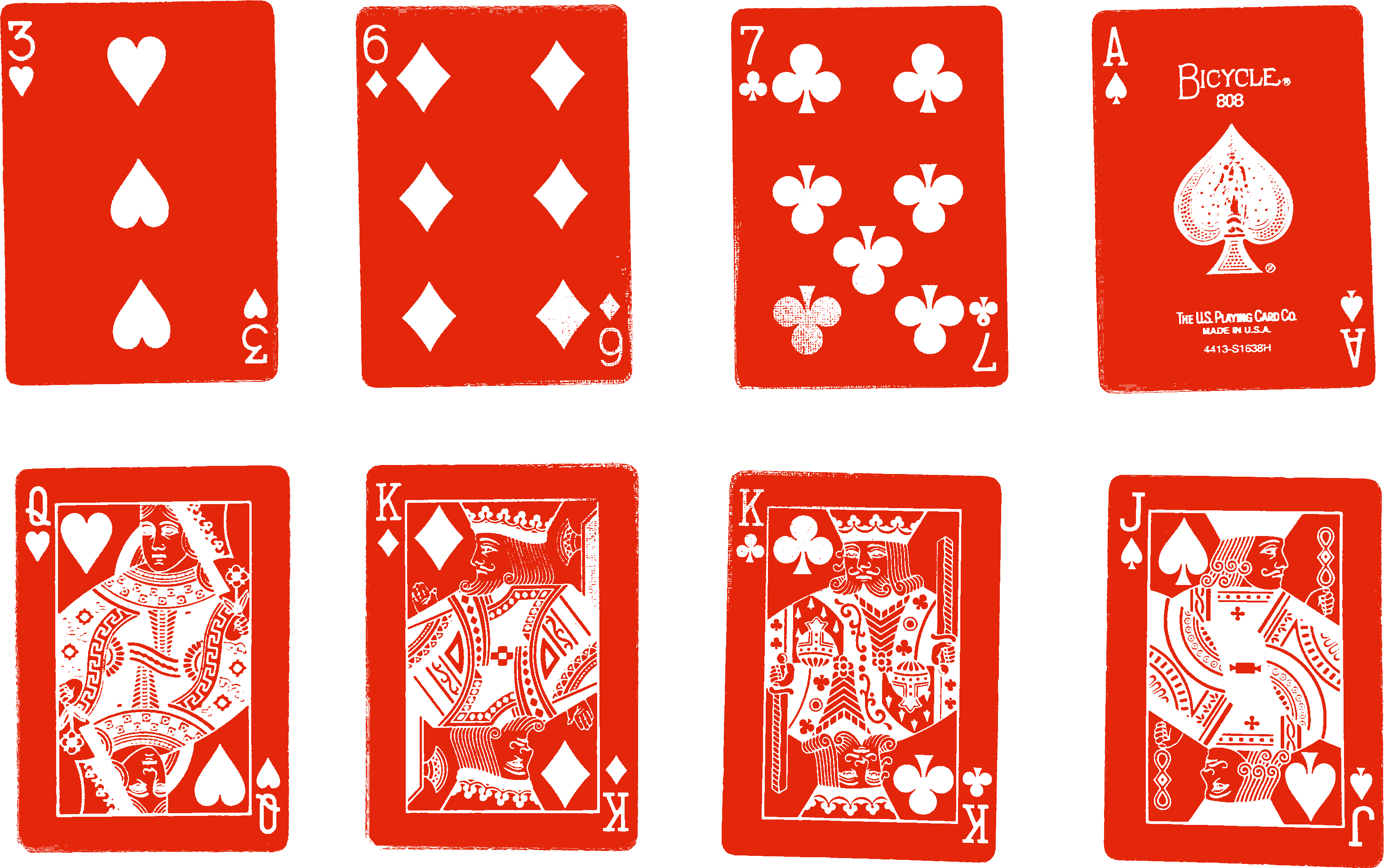Showcase > Game Design >
Empires Card Game | Rules
Resource management with a 52-card deck.
After playing several card games with bespoke decks and counters, I wanted to see if I could make a resource management game just using a regular deck of cards. Part of the rules came to me after a stint of playing Balatro and Age of Empires.
While playing AoE, I came to appriciate how risk-taking and obfuscation makes strategy games more interesting, and of course how risk is also an enourmous element of most card games.
What came out of my brainstorming was Empires. Using a standard 52 card deck and scoring sheets, the game is played by two players and involves managing your own resources while trying to determine what resources your opponent has.
During an extensive drawing and discarding round where both players assess their resources availible, players can infer what cards their opponents might have based on what they've discarded from their half of the deck, adding a layer of strategy and higher-level play.
Players have four types of resource availible, represented by each suit. Each resource has a different function, either helping you build up victory points or harming your opponent's capabilities (for a full description of the game's rules, check the link above).
While number cards determine base values, face cards act as modifiers. Drawn number cards are visible to both players, but players can only view their own drawn face cards, adding that layer of obfuscation. For example, a Queen will only add 5 points of value to its suit's score, but a King will double it. This means if one of the player's suits scores 5 or lower, the player is better off with a Queen adding on 5 points than the King doubling it. Of course, their opponent will only know of what face cards they drew that round, and they will have to take calculated risks based on what the final values of their opponent's card values will be.
Playtesting
While playtesting, I found that having the players draw their face card multipliers without them being shown on the table allowed for some more involved, but strategic, guess work (introduced into version 0.2 of the rules).
One glaring pitfall gleamed from playtesting was how a player could have an extraordinarily lucky draw one round that could let them win instantly. This might be countered by more acute opponent strategy, or maybe through balancing the maximum points scored in a round. It's hard to tell as it's a game new to everyone (including me) so no one has figured out the meta game yet.
I also figured out a three-player version of the game was technically feasible, as each player could divide a deck's 12 face cards evenly between each other, but the balancing act for how the rest of the cards were dealt and points used would have to be tested more rigorously.